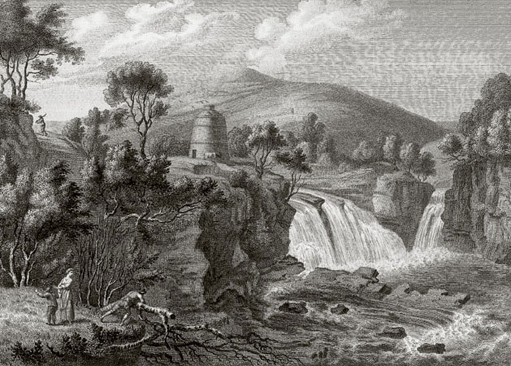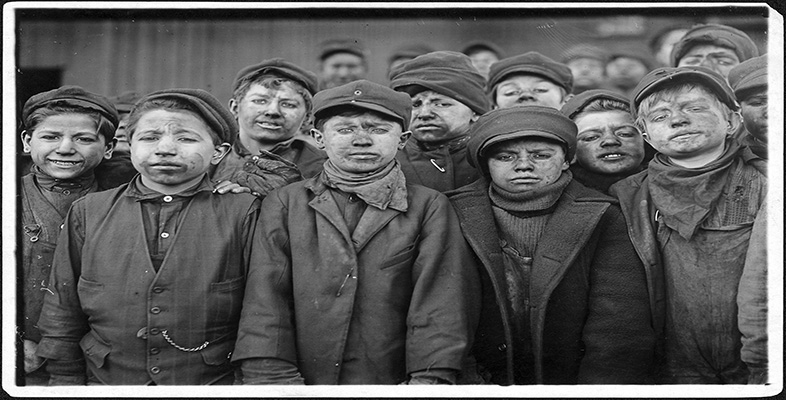4.6 New Lanark and the Falls of Clyde
Let us take a moment to consider another aspect of New Lanark that was potentially of great importance to any propaganda campaign built around it. Big factories employing large numbers of youngsters were still unusual and so objects of curiosity. But New Lanark was unique given its proximity to the Falls of Clyde, the most spectacular waterfalls in Britain. By our period, the falls (see Figure 5) were celebrated in the works of leading artists and engravers (including Turner – see Plate 1, linked below), and set as they were in the romantic scenery then becoming fashionable were already a major tourist attraction visited by hundreds each year. As the roads were improved, more visitors came, often from Edinburgh or Glasgow, but also persons on tours from England or abroad, stopping off en route from the Lakes to the Trossachs or other more accessible parts of the southern Highlands. Literary visitors included William and Dorothy Wordsworth, Samuel Taylor Coleridge, Robert Southey and many others, who visited both the falls and the village in the course of Scottish tours. The publicity value for the marketing of New Lanark was clearly considerable, as Owen must have realised, and he was to generate an upturn in visitor numbers from hundreds to thousands following the publication of A New View of Society.
Click to open Plate 1 [Tip: hold Ctrl and click a link to open it in a new tab. (Hide tip)] , J.M.W. Turner, The Falls of Clyde, c.1844–6, oil on canvas, 89 × 119.5 cm, Lady Lever Art Gallery, Port Sunlight.

